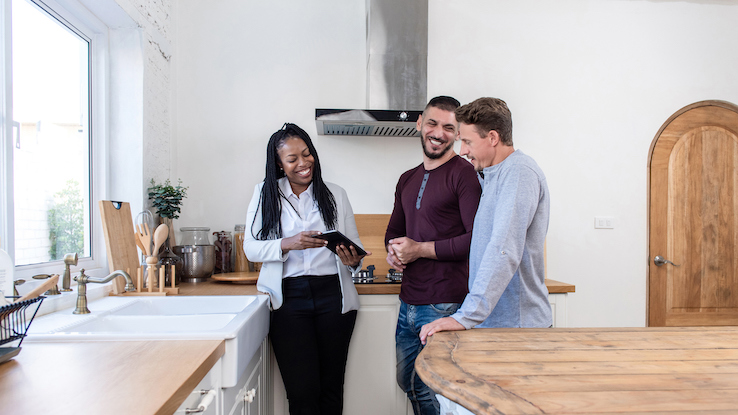How Easy is It to Qualify for a Mortgage

If you're in the market to buy a home, you'll have some extensive financial choices ahead. Along with choosing a primary mortgage – preferably with the lowest interest rate available – from a reliable bank, you need to navigate down payments, homeowners insurance, fees and many other aspects of the lending process. In addition, if you haven't saved up a considerable down payment, the total cost to purchase a home could be much higher than you anticipate. Fortunately, you can reduce the price tag with a piggyback mortgage.
While piggyback mortgages aren't new, they also aren't that common. As a result, you might be unfamiliar with how they work. These extra mortgages can help you out if you're unable to make a traditional down payment on a new home, but there are some important things to understand before you decide applying for one is the right choice. Here's a look into the basics of piggyback mortgages, including how they work, to help you learn more.
Also referred to as 80-10-10 loans and combination mortgages, a piggyback mortgage is a second home loan designed to boost your down payment on your initial mortgage loan. Traditionally, you'd make a 20% down payment on the price of the home you're purchasing and finance, or get a mortgage for, the remaining 80%. A piggyback mortgage allows you to pay less than 20% down and finance the difference between it and the 80% of the first mortgage you get on the home.
Often, a homebuyer borrows 90% of a home's purchase price across the two loans. This means they put 80% on the primary mortgage, with the additional 10% coming from the piggyback mortgage. They pay the remaining 10% in cash as their down payment.
The Common Types of Piggyback Mortgages
Generally, the most common types of financing used for a piggyback mortgage are home equity loans and home equity lines of credit (HELOCs). In both cases, the property you're purchasing serves as collateral. However, they do function a bit differently beyond that.
With a home equity loan, the financing works like a traditional mortgage. You borrow a set amount and repay it over a specific period. Once the repayment is complete, the loan is considered paid in full, and it closes.
HELOCs are a bit different. In this case, you also borrow a specific amount as part of your home purchase. However, as you repay that amount, you can potentially borrow it again. It's a revolving form of credit instead of a fixed-term loan.

When and Why People Get Piggyback Mortgages
In most cases, people use piggyback mortgages in conjunction with savings to ensure they can reach the traditional 20% down payment threshold. Along with enabling a borrower to qualify for a conventional mortgage, putting 20% down commonly allows borrowers to avoid paying for private mortgage insurance (PMI) on any mortgage type that comes with that possibility.
PMI often costs somewhere between 0.58 and 1.86% of the loan amount. Since that can increase your monthly mortgage payment, you might prefer to find a way to bypass it.
In some cases, piggyback mortgages also offer a way to avoid getting a jumbo loan. When a mortgage exceeds a conforming loan limit, a smaller lender can't sell it to Fannie Mae or Freddie Mac to consolidate. Because of this, lenders often put stricter terms on these bigger loans, require larger down payments and may charge higher interest rates. By using a piggyback mortgage, you may be able to reduce the amount of the primary loan to ensure it falls under the conforming limit.
How Piggyback Mortgages Work
With a piggyback mortgage, you end up with two home loans. If you obtain the more common 80-10-10 type, the primary mortgage will cover 80% of the home's purchase price, ensuring you can avoid PMI. The piggyback mortgage would then be for 10% of the remaining cost, serving as half of the down payment. You then pay the other half of the down payment in cash.
Most people take out their primary and piggyback mortgages simultaneously, either from the same lender or two different ones. Then, the smaller one effectively piggybacks on the other, hence the name.
An alternative to that split is the 75-15-10 loan. It's the same general approach, but it's more commonly used for condos or properties with stricter loan-to-value (LTV) ratios. In this case, the primary mortgage is for 75% of the home's purchase price, and the piggyback loan covers 15%. The final 10% is still a cash down payment that comes from your savings.
The Pros and Cons of Piggyback Mortgages
For many borrowers, the main benefit of getting a piggyback mortgage is the ability to avoid paying PMI by ensuring they can reach the 20% down payment threshold. However, it's also a plausible solution for bypassing jumbo loans, potentially leading to lower interest rates and better terms.
When it comes to drawbacks, the main one is the qualification process. Typically, you need very good or exceptional credit and a low debt-to-income ratio to secure an approval. Additionally, you have to navigate two loan applications simultaneously while also juggling the home-purchase process, which is cumbersome.
In some cases, your options for the piggyback loan can be a bit limited. Not all lenders are as open to issuing this type of financing. At times, you may be able to get recommendations from your primary lender, though you may also have to research them on your own.

Securing two loans also means covering some extra costs. You may have double the origination fees, appraisal costs, inspection fees and other expenses, depending on the piggyback loan and primary mortgage involved. Also, depending on the size and terms of the piggyback loan, these costs could be higher than paying PMI would be.
If you fall behind on either mortgage, your home is at risk. It's serving as collateral on both loans, so defaulting on just one of the loans could trigger foreclosure. Finally, your refinancing options may be limited while the piggyback mortgage is active.
How to Get a Piggyback Mortgage
Getting a piggyback mortgage isn't unlike securing a primary home loan. You'll need a solid credit score, suitable income and a low debt-to-income ratio, but the exact qualifications can vary by lender. Additionally, both lenders must be aware of your intention to get both loans simultaneously.
Ultimately, if you're interested in a piggyback mortgage, your best bet is to speak with your preferred primary lender to see if it has recommendations. In some cases, the lender may be able to fund the second loan, which can simplify the process a bit. However, that's neither a requirement nor a guaranteed option.
If your main lender isn't a reasonable solution and it can't recommend another company, you'll want to research banks to determine which one can meet this need. Approach it as you would a primary mortgage, focusing on favorable terms to ensure you're coming out ahead financially in the end.
Source: https://www.askmoney.com/loans-mortgages/what-is-piggyback-mortgage?utm_content=params%3Ao%3D1465803%26ad%3DdirN%26qo%3DserpIndex&ueid=34768f48-6fbf-474a-a443-bfb72e8bc3f2